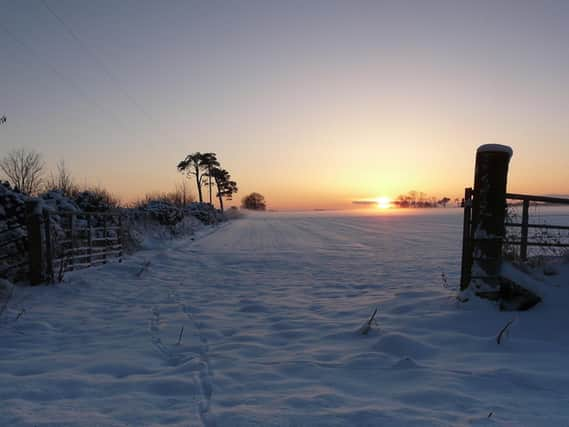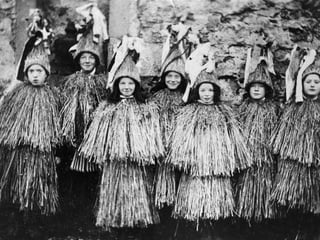Winter Solstice: Wild tales of slaughtered bulls, human sacrifice and much merriment


The Winter Solstice, when northern latitudes are tilted the furthest angle away from the sun, was one of most important points in the celestial calendar.
This year, it is marked on Monday, December 21.
The solstice traditionally marked the turning point of the dark season and the return of hope and optimism for a prosperous year ahead.
Advertisement
Hide AdAdvertisement
Hide AdFor ancient communities whose wellbeing was closely tied to the land, this transition from dark to light was fundamental to wellbeing. For those living in the far north today, the same could be said.
Antiquarian James Napier, originally from Partick in Glasgow, gave a fantastical account of how the Celtic priests, or druids, marked this time of year in Folklore of Superstitions, Beliefs in the West of Scotland (1879).
He wrote of priests gathering and walking in solemn procession to the forest to search for mistletoe growing on oak trees, with the plant holding near miraculous properties of curing illness, ensuring fertility and protecting against the darkness of witchcraft.
Mr Napier wrote: “When found, the priests ascended the tree and cut down the divine plant with a golden knife, which was secured below upon a line cloth of spotless white. Two white bulls were then conducted to the spot for the occasion and there sacrificed to the sun god.
“The plant was then brought home with shouts of joy, mingled with prayers and hymns, and then followed a general religious feast and afterwards scenes of boisterous merriment.”
Mt Napier claimed, based on other accounts of the ‘sun feast’, there were often human victims offered in sacrifice to the sun.
He said: “The day after the sacrifices was kept as a day of rejoicing, neighbours visited each other with gifts and with expressions of good will.”
Two of Scotland’s most famous prehistoric burial sites, Clava Cairns near Inverness and Maeshowe on Orkney, are said to have their passageways aligned to the angle of the setting sun around solstice.
Advertisement
Hide AdAdvertisement
Hide AdAt Maeshowe, the light is said to shine through the passageway to illuminate the chambered cairn, where bodies were laid to rest.
Some believe the entry of the sun symbolised the continuance of life, while others claim the shaft of sun carried away the souls of the dead, according to Orkneyjar website of island history, custom and folklore.
Sigurd Towrie, author of Orkneyjar, said writers such as Mr Napier helped to overhype the observance of Winter Solstice through time.
Mr Towrie said: “The 19th-century antiquarians have a lot to answer for. A whole history was created around the druid side of things.”
On Orkney, he said the midwinter sun shone on Maeshowe for days before and after Winter Solstice, adding there had been a “fabrication” around the shortest day at the site.
It was clear, however, Maeshowe had been built to “face the sky” during the darkest point of the year.
"After the solstice, you have these celebrations, Yule and Christmas, that come after the darkest point of the year,” he said. “It’s the return of the light. Most people on Orkney wouldn’t go out on the street and talk about it, but you know.”
A message from the Editor:
Thank you for reading this article. We're more reliant on your support than ever as the shift in consumer habits brought about by Coronavirus impacts our advertisers.
If you haven't already, please consider supporting our trusted, fact-checked journalism by taking out a digital subscription.
Comments
Want to join the conversation? Please or to comment on this article.
